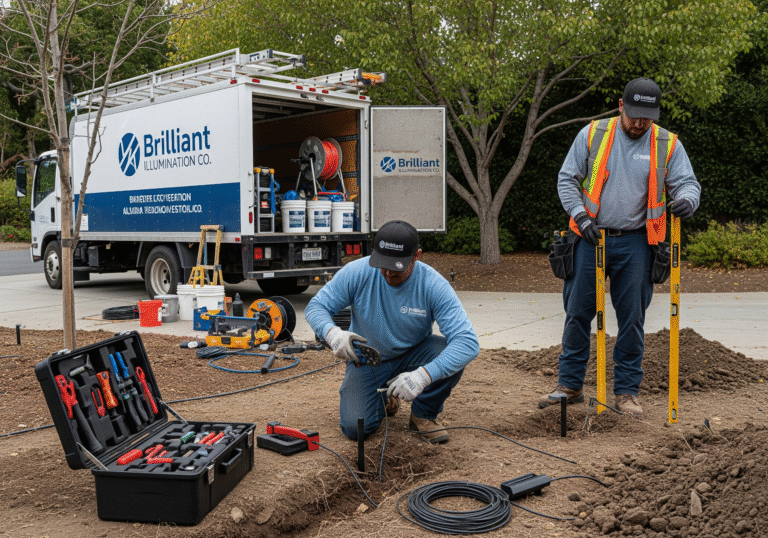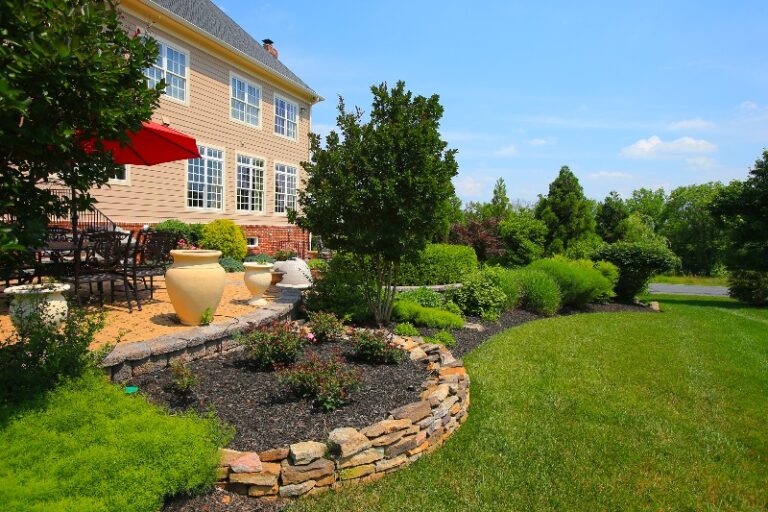How to Choose the Perfect Pergola for Your Backyard: A Comprehensive Guide

Creating a comfortable outdoor living space can transform a simple backyard into a relaxing retreat. One of the key elements to achieving this is selecting the perfect pergola. Choosing the right pergola involves considering your backyard’s size, style, and materials to not only enhance aesthetic appeal but also ensure practicality.
A pergola adds charm and functionality to any outdoor area, offering both shade and style. It can serve as a focal point or seamlessly blend into the background, depending on one’s vision. The options are vast, from traditional wood designs to sleek modern structures, making it easy to find one that matches your taste.
Material choice plays a crucial role in the pergola’s durability and appearance. While wood offers a classic look, metal or vinyl might require less maintenance. Exploring these options ensures the pergola not only complements the backyard but also aligns with the homeowner’s lifestyle and aesthetic preferences.
Understanding Pergolas
Pergolas are an attractive outdoor structure that can enhance the beauty and functionality of any garden or patio. They come in various styles, adding both aesthetics and purpose to outdoor living spaces.
Defining Pergolas and Their Purpose
A pergola is an outdoor structure consisting of columns or posts supporting a roof or a lattice. The roof might be open or covered with panels to provide some shade and protection from the elements.
Pergolas are often used as a focal point in gardens, creating a defined space for outdoor living or relaxation. They offer a spot for outdoor furniture, allowing people to enjoy the fresh air in a comfortable setting.
These structures can also serve as a framework for climbing plants, adding natural beauty. By supporting vines or flowers, pergolas transform ordinary patios into lush retreats, blending architecture and nature seamlessly.
Types of Pergolas
There are several types of pergolas, each designed to meet different needs. Freestanding pergolas can be placed anywhere in a garden or yard, offering flexibility in design.
Attached pergolas extend from a building, providing an easy way to add outdoor living space to a home. They create a shaded passageway or seating area, seamlessly blending indoor and outdoor environments.
Materials such as wood, metal, and vinyl contribute to different styles. Wood offers a classic look, while metal gives a modern touch. Vinyl requires less maintenance, standing up well to weather. Each type and material has its own appeal, fitting various design preferences.
Benefits of Adding a Pergola to Your Outdoor Space
Adding a pergola can enhance an outdoor space in many ways. It provides shade, making it more comfortable to spend time outside on a sunny day. The structure also defines outdoor living areas, adding structure and elegance to patios or gardens.
Pergolas can increase property value by improving the looks and usability of the outdoor space. They create a peaceful outdoor retreat right within the comfort of home.
Moreover, pergolas encourage more time spent outside, offering a unique spot for gatherings, relaxation, or dining in nature. This structure blends functionality and beauty, appealing to both practical and aesthetic senses.
Evaluating Your Space for a Pergola
When planning for a pergola, it’s important to consider your outdoor space, including the size of your backyard and sun exposure. Make sure the pergola integrates well with existing outdoor features for a harmonious look.
Assessing Backyard Size and Layout
Start by measuring the available space in your backyard. This will help decide the pergola size. A larger backyard can accommodate a bigger pergola, providing more room for seating or dining areas. In smaller yards, choose a compact design to avoid overwhelming the space.
Consider the layout and how the pergola will fit. Think about walkways, garden beds, and other landscaping features. Make sure there’s enough room for movement around the pergola without it feeling cramped. Proper placement ensures the pergola enhances the outdoor living space.
Considering Sun Exposure and Shade Requirements
Check how the sun moves across your backyard. This affects where you place the pergola. If you want a cool, shaded spot, find an area with limited direct sunlight. You might want to add shade covers or climbing plants to block more sun.
If watching sunsets or sunrises from under the pergola is on your wishlist, choose an area that faces appropriately. Consider how the sun impacts the nearby areas, like your house or garden, to avoid unwanted glare or overheating.
Integrating with Existing Outdoor Features
Look at the existing structures and designs in your outdoor area. The pergola should blend well with features like patios, decks, and pools. Choose materials and colors that match or complement these elements.
Additionally, consider how the pergola interacts with existing landscaping. Use plants that enhance the structure without overpowering it. A pergola can serve as a central point or blend in seamlessly with the surrounding area, improving both aesthetics and functionality of the backyard.
Choosing the Right Materials
Selecting the right materials for your pergola involves considering durability, maintenance, and environmental impacts. Materials like wood, vinyl, and metal each offer distinct advantages and challenges. Here’s what you need to know.
Wood vs. Vinyl vs. Metal Pergolas
Wood Pergolas provide a natural beauty that many find appealing. They blend well with outdoor spaces and can be customized easily. Common woods include cedar and redwood, known for their resistance to decay. However, wood may need regular staining or sealing to maintain its look.
Vinyl Pergolas are low maintenance, requiring only occasional cleaning. They resist weathering and pests, unlike wood. While they offer less customization, they are available in a variety of colors and styles.
Metal Pergolas are highly durable and can be quite weather-resistant. Materials like aluminum and steel provide strong support. Though they may lack the organic feel of wood, they are often powder-coated to prevent rusting.
Durability and Maintenance Considerations
When it comes to durability, metal pergolas often outlast others due to their strength. They handle harsh weather without much wear.
Wood is quite strong but might face problems like rot if not properly maintained. It needs treatment against moisture and insects.
Vinyl pergolas are durable in different ways. They resist dents and do not fade or crack in sunlight, making them a great low-maintenance option.
Understanding Environmental Impacts on Materials
Each material affects the environment differently. Wood pergolas require forest resources, so sourcing sustainably can minimize impact. They also bio-degrade over time, which is environmentally friendly.
Vinyl pergolas are made from plastic, which can impact the planet if not recycled. They do last long, which reduces the need for replacements.
Metal pergolas use resources like aluminum or steel. While durable, production can involve significant energy use. Many metals are recyclable, which can help reduce their footprint if handled properly.
Design and Aesthetic Considerations
Choosing a pergola involves matching its design with your home’s style and your personal taste. Different styles, from modern to traditional, offer various aesthetic appeals, helping transform your backyard into a soothing retreat.
Complementing Your Home’s Architecture
The pergola design should align with the architectural style of your home. Colonial homes might benefit from classic wooden pergolas, emphasizing traditional craftsmanship. Modern homes pair well with sleek, minimalistic pergolas made from metal or vinyl, which highlight clean lines.
Consider the proportion and scale in relation to your home’s size. A large pergola might overwhelm a small yard, while a tiny one may not suit a spacious estate. Matching or complementing colors can also enhance visual harmony.
Modern vs. Traditional Pergola Styles
Modern pergolas typically feature simple geometric shapes and minimal adornments. Materials like metal and fiberglass are common, allowing for a streamlined appearance. Retractable canopies or automated features often add to their functionality.
Traditional styles favor wood and often include intricate designs or carvings. These pergolas can incorporate climbing plants, adding a natural feel. Such styles often evoke a sense of nostalgia or classic elegance.
Each style brings unique advantages, so choosing one depends on personal preference and the desired atmosphere of the outdoor space.
Custom Design Options for Personal Preference
For those who seek uniqueness, custom pergolas are an excellent choice. Personalize by selecting materials like bamboo or incorporating custom paint finishes. Adding features like built-in seating or lighting enhances both form and function.
Customized options can reflect personal preferences in aesthetics, creating a backyard space that feels individually curated. Whether preferring the rustic charm of reclaimed wood or the modern appeal of sleek glass elements, custom designs cater to unique tastes.
Discussing with a professional designer can help achieve a vision that complements existing home decor while infusing personal flair.
Size and Type of Pergola
When choosing a pergola for your backyard, it’s important to think about size and type. Factors like the height and whether it stands alone or connects to your house affect its suitability.
Deciding on Pergola Size and Height
Pergola size and height depend on both the space available and the function it will serve. A large pergola is ideal for big gatherings and might suit expansive yards. Medium pergolas work well for average-sized spaces, providing a cozy spot without overwhelming the setting.
Small pergolas can create a quaint corner. Height plays a role in aesthetics and comfort. A taller pergola provides an airy feel, essential for areas with abundant sunlight. Conversely, a lower-profile structure can offer sheltered comfort.
It’s crucial to measure your space carefully, considering nearby structures and plants. This ensures your chosen pergola complements the environment without feeling cramped or oversized. Accurate measurements lead to a harmonious installation where both style and purpose meet.
Freestanding vs. Attached Options
The choice between a freestanding pergola and an attached pergola depends on the layout and architectural style of the home. A freestanding pergola offers flexibility, as it can be placed anywhere, creating a focal point in the garden or near a pool.
Constructing an attached pergola might fit better with houses having large patios or decks. This type of pergola seamlessly extends living space outdoors, providing a continuous flow from indoor to outdoor areas.
Each type has its benefits. Freestanding designs can be more dramatic, while attached ones offer convenience and stability. Consider how each will interact with existing structures and the potential need for professional installation, such as expert pergola installation. This can provide the stylistic integration you need for your landscape.
Installation and Building Code Compliance
Installing a pergola involves decisions on how to build it and how to follow local rules.
DIY vs. Professional Installation
Choosing between DIY and professional installation impacts time, cost, and skill level needed. Doing it yourself can save money and offer satisfaction. However, he’s aware of measurements and safety. Mistakes in construction might lead to extra repairs or reduced durability.
Hiring a professional ensures skilled work and saves time. They often handle tricky situations like uneven ground or complex designs. Although it costs more, professional installation often includes warranties that cover unexpected issues. They have experience with tools, materials, and techniques to ensure the pergola is safe and secure.
Navigating Local Building Codes and Permits
Building codes and permits are crucial for legal and safe pergola construction. Before installation, it is vital to check local regulations. Rules vary by location and may require specific clearance or restrict size and materials.
Obtaining permits often involves submitting plans and waiting for approval. This may take time, but it’s necessary to avoid fines. Consulting with local officials ensures adherence to guidelines. Professionals often help with this process, using their knowledge to meet standards. Ensuring compliance not only avoids legal troubles but also ensures the structure’s safety and longevity.






